An ongoing exhibition at CSMVS rediscovers the journey of food over the decades and across social institutions

In bhatukali or play kitchen sets made up of brass, coloured wood and clay, we take note of gender roles permeating play. Pics/Sammohinee Ghosh
Food is the one thing that can unite communities and also spur war. While it forges some of our most intimate childhood memories, it also features at the global intersection of chance and contrivance — making its availability a matter of contention. Curated by the students of CSMVS’ Post Graduate Diploma Course, Savouring Connections: How Food Brings Us Together, is a panoramic display of the layered cultural epithet from our homes to the greater world. Here’s a visual peek into the curated treat:
ADVERTISEMENT
TILL ongoing
TIME 11 am to 6 pm (The exhibition is open on all days of the week)
AT Karl and Meherbai Khandalavala Gallery, CSMVS, Mahatma Gandhi Road, Fort.
LOG ON TO csmvs.in
COST Rs 150 onwards (Museum entry fee applies)
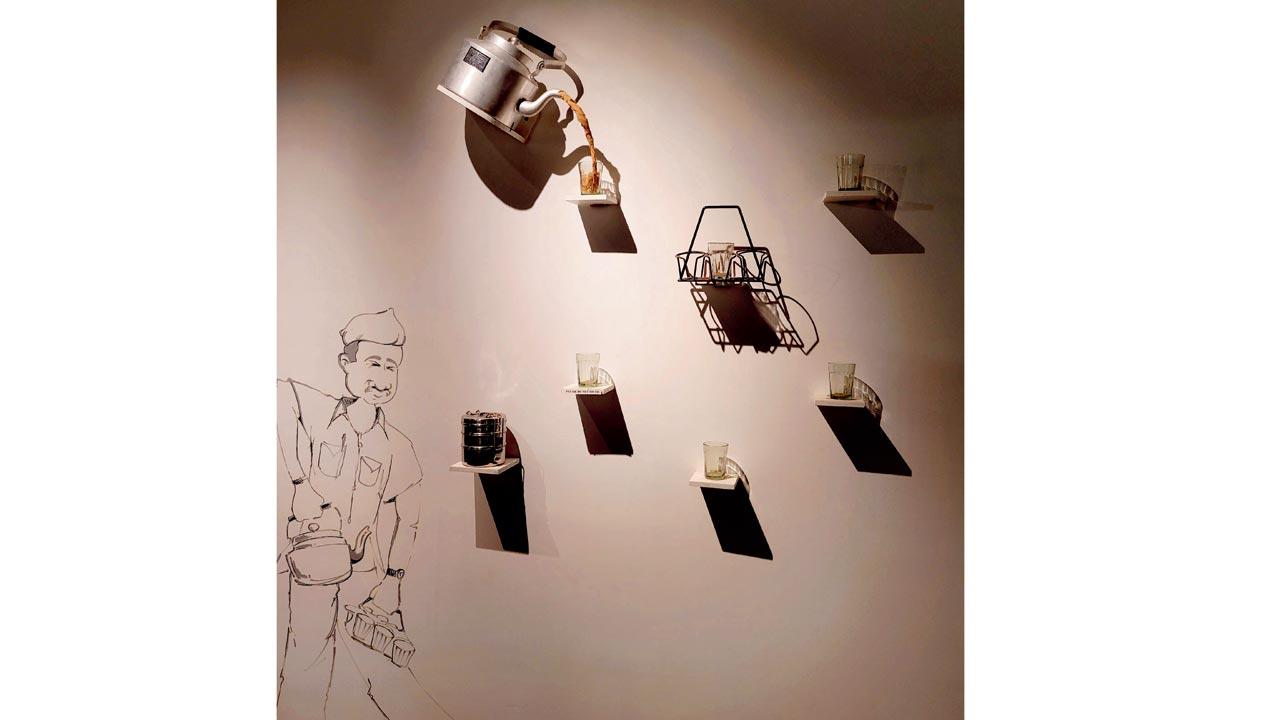 Food progresses from families to friends. Chai — the ever popular cutting chai of Mumbai — is the star of any adda. Who would imagine that the hot beverage travelled to England from China and Japan, before reaching India?
Food progresses from families to friends. Chai — the ever popular cutting chai of Mumbai — is the star of any adda. Who would imagine that the hot beverage travelled to England from China and Japan, before reaching India?
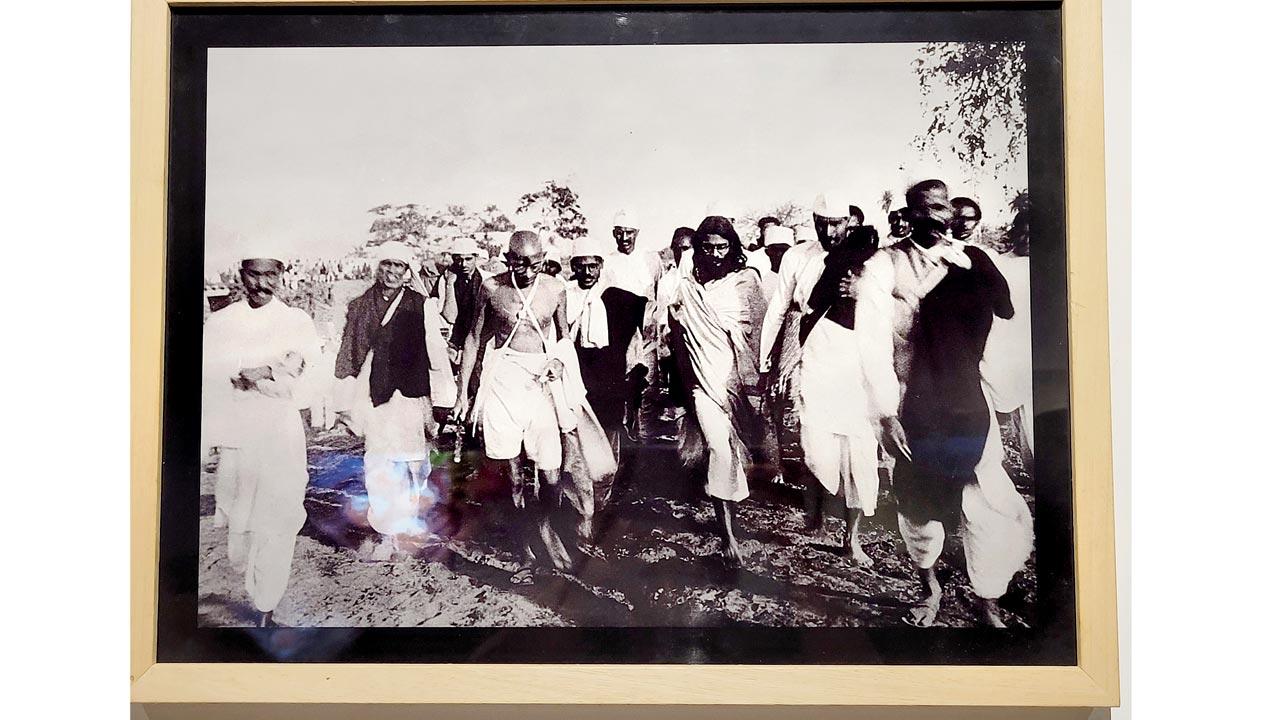 The Dandi March led by Mahatma Gandhi marked a crucial chapter in the non-violent civil movement. We have come a long way since when Indians needed salt permits to purchase salt.
The Dandi March led by Mahatma Gandhi marked a crucial chapter in the non-violent civil movement. We have come a long way since when Indians needed salt permits to purchase salt.
 After a brief reminder of the White Revolution, the exhibition features Amul’s print ads that have made us think and laugh with their witty punchlines and funny cartoons. This writer hums to Mero gaam katha parey playing in the background.
After a brief reminder of the White Revolution, the exhibition features Amul’s print ads that have made us think and laugh with their witty punchlines and funny cartoons. This writer hums to Mero gaam katha parey playing in the background.
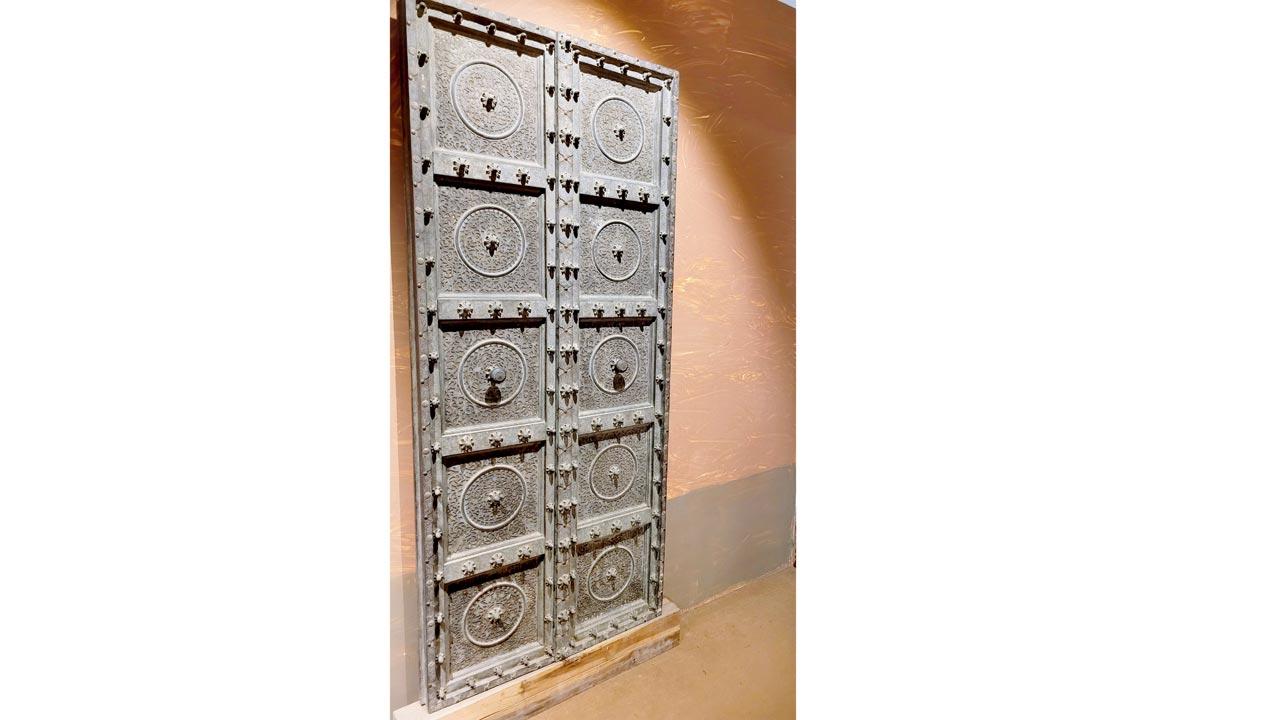 This ornate kitchen door is part of the museum’s collection. We learn that the display spotlights loan objects sourced by the students of museology. Loaning serves as a lesson in responsibility-building.
This ornate kitchen door is part of the museum’s collection. We learn that the display spotlights loan objects sourced by the students of museology. Loaning serves as a lesson in responsibility-building.
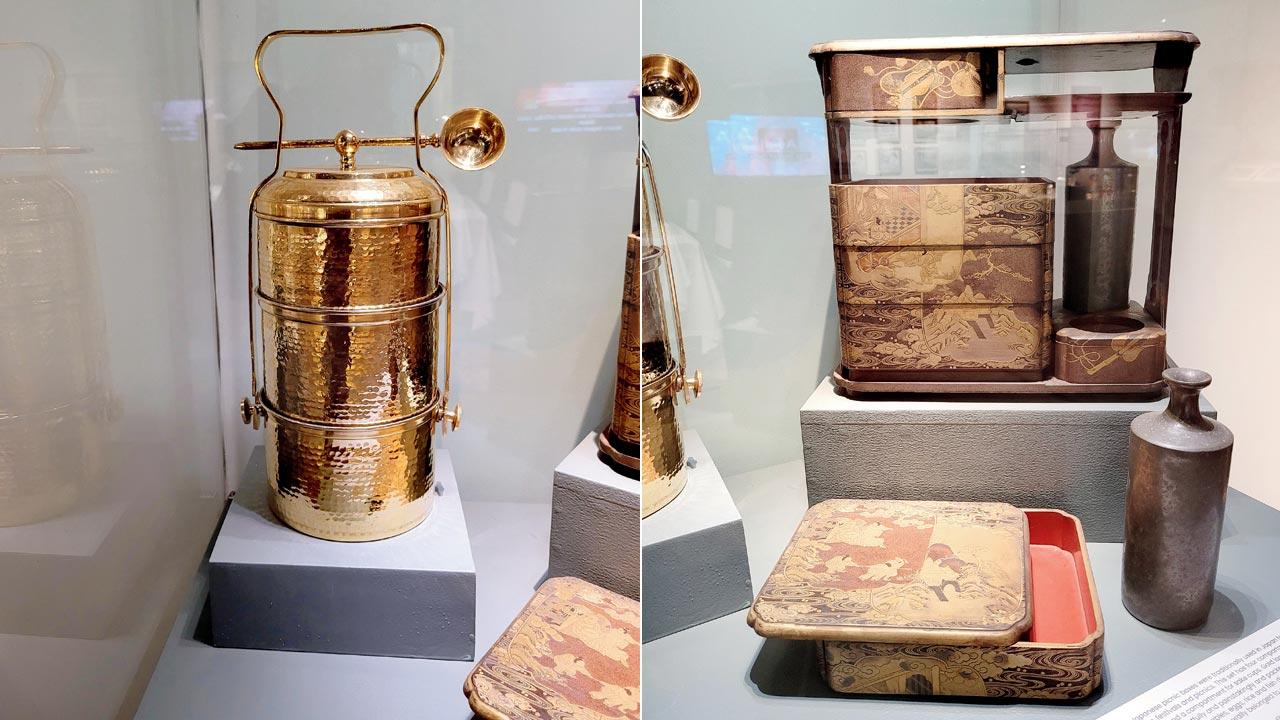 Food that we share: A huge brass tiffin carrier, with a lock that doubles up as the ladle, and a bento box highlight the community feeling of packed meals.
Food that we share: A huge brass tiffin carrier, with a lock that doubles up as the ladle, and a bento box highlight the community feeling of packed meals.
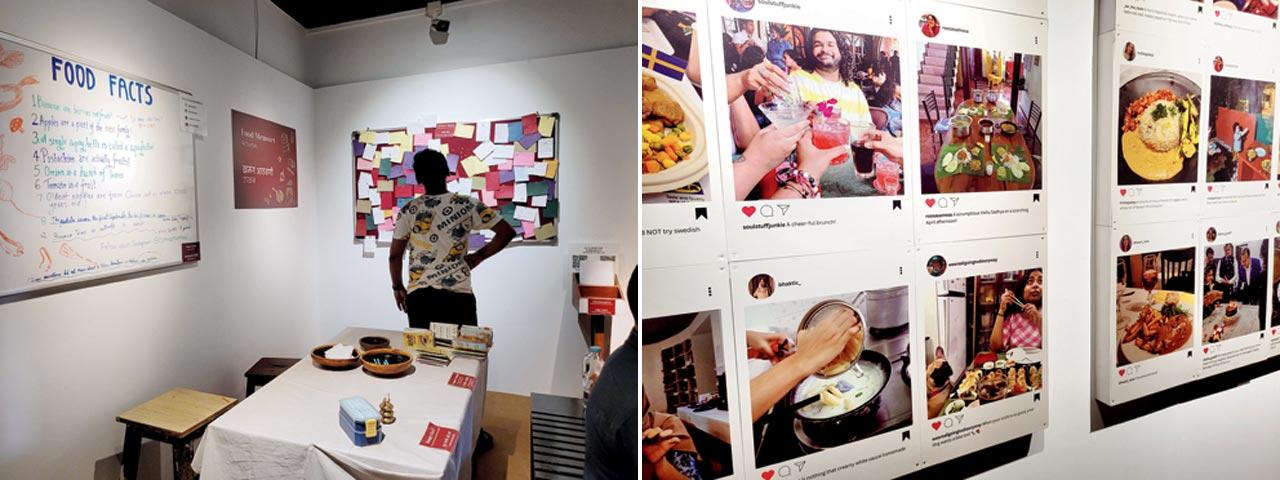 Savouring Connections ends with our contemporary musings of food on Instagram. The last segment welcomes visitors to write down family recipes and personal food memories on the memory board. You can take a note home if you promise to leave one behind.
Savouring Connections ends with our contemporary musings of food on Instagram. The last segment welcomes visitors to write down family recipes and personal food memories on the memory board. You can take a note home if you promise to leave one behind.
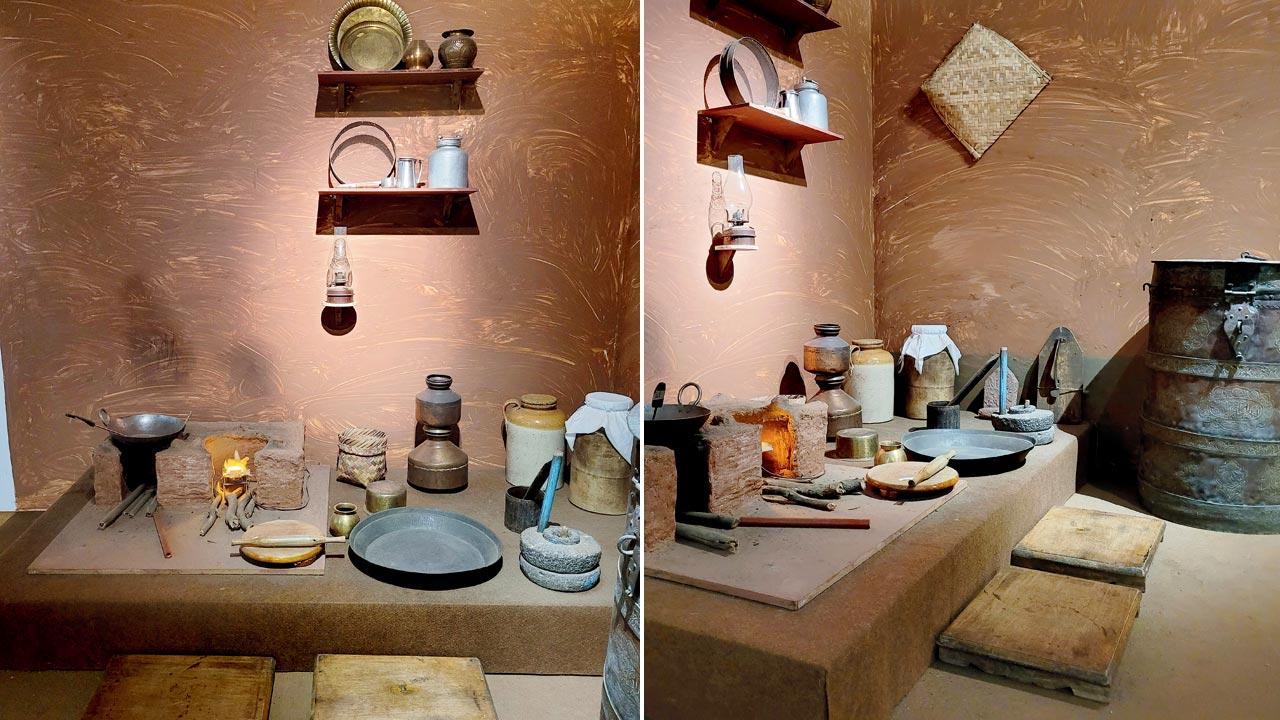 Visitors set out to trace the circle of food from this corner that represents a traditional kitchen in any Indian household. The guard at the gallery shares that the hand-plastered mud walls remind him of his ajji, and the family dinners around the chulha. Clay, stone, cane, aluminium, copper and tin — did kitchens of the past boast of sustainable materials?
Visitors set out to trace the circle of food from this corner that represents a traditional kitchen in any Indian household. The guard at the gallery shares that the hand-plastered mud walls remind him of his ajji, and the family dinners around the chulha. Clay, stone, cane, aluminium, copper and tin — did kitchens of the past boast of sustainable materials?
 Subscribe today by clicking the link and stay updated with the latest news!" Click here!
Subscribe today by clicking the link and stay updated with the latest news!" Click here!







